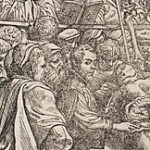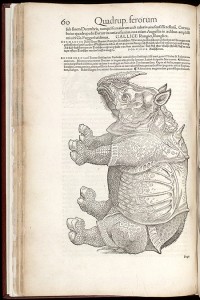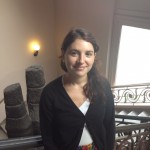 Today, Halloween, is traditionally marked with bats, pumpkins, ghosts and of course, skeletons. In the 1500’s, one man changed the way the medical world saw the skeletal and muscular systems of the human body. That man, Andreas Vesalius, illustrated anatomical features in his De humani corporis fabrica (On the structure of the human body) in a way never before seen. Although the pages below may seem gruesome (fair warning, gentle readers!), they come from one of the most influential anatomy books of all time.
Today, Halloween, is traditionally marked with bats, pumpkins, ghosts and of course, skeletons. In the 1500’s, one man changed the way the medical world saw the skeletal and muscular systems of the human body. That man, Andreas Vesalius, illustrated anatomical features in his De humani corporis fabrica (On the structure of the human body) in a way never before seen. Although the pages below may seem gruesome (fair warning, gentle readers!), they come from one of the most influential anatomy books of all time.
Month: October 2012

Earth’s biodiversity is under constant threat as loss of habitat leads to the extinction of species. Thousands of species—plants and animals—are disappearing every year, and one of the most endangered is the rhinoceros. The Smithsonian Institution takes part in a global effort dedicated to the survival of endangered species and their habitats, and through its collections and staff, the Smithsonian Libraries participates in this work by supporting and enhancing research in wildlife conservation biology. It has opened the exhibition “Fascinating-Endangered RHINO,” which will be on display from September through April 30, 2013, at the Smithsonian’s National Museum of Natural History.

My name is Emily Somach and I am a new intern at the Smithsonian Institution Libraries. I am originally from the North Shore of Massachusetts but have been living in the Maryland/DC area since February. I graduated from Northwestern University in 2010 with a B.A. in English Literature and will soon be applying to the MLS program at University of Maryland. My internship here at the Smithsonian centers on the archival arrangement of files from the Institution’s Forum on Material Culture, and I will be working under the supervision of Mary Augusta Thomas. I also plan to help resurrect the forum’s newsletter and assist in its writing, editing, and production.
Wouldn’t you like to be a walking work of art? Then join us at the Smithsonian Craft2Wear Show on October 26-28 at the National Building Museum to celebrate the finest American wearable craft artists. more »

This post was written by guest author Sara Snyder, Webmaster at the Archives of American Art.
Have you ever tried to write or edit a Wikipedia article? It can be really a fun and rewarding experience, especially for library, archives, or museum professionals, since we are often passionately dedicated to sharing knowledge. If you have tried it, then you already know that it is not easy for newcomers to just jump in and start editing. The design of the wiki interface can be intimidating, and the norms and rules of the Wikipedia online community can be mystifying. New editors often have their work changed or reverted, which frustrates them.

In my role as web developer at the Smithsonian Libraries, I recently attended the LITA National Forum in Columbus, OH. At the conference, I participated in an 8-hour pre-conference session on website analytics and how to use them to understand and improve the usability of a website. Since this is Open Access Week, I thought a summary of this session might be interesting to share.

This post was written by Martin Kalfatovic, Associate Director, Digital Services Division, Smithsonian Institution Libraries.
On October 11-12, Nancy Gwinn, Director of the Smithsonian Institution Libraries, and I participated in the Digital Public Library of America’s (DPLA) Midwest workstream and plenary meetings. The meetings were held in some wonderful meeting spaces at the Harold Washington Library Center of the Chicago Public Library (interesting side note: the building holds the record for largest public library space!).
